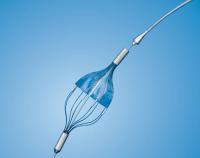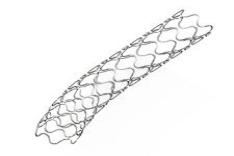VASCULAR.EXPERT
mini-invasives
technics

Marc FITOUSSI M.D
Vascular Surgeon.
18-22 Queen Anne Street
W1G 8HU London
+44 20 7034 3326
VASCULAR.EXPERT

Marc FITOUSSI M.D
Vascular Surgeon.
18-22 Queen Anne Street
W1G 8HU London
+44 20 7034 3326


ANGIOPLASTY STENT
 filter
filter  stent
stent
Angioplasty associated to stenting
The placement of a carotid filter may be used positioned downstream of the lesion so as to block any embolisms
Technic
Under local anesthesia.
Percutaneous punction without scare most often in the groin of the right femoral artery.
A guide is mounted from the femoral to the aorta and into the carotid artery.
a protection system is mounted, like an umbrella, downstream of the lesion.
The stent (stent) is placed on the stenosis and dilated to restore the carotid artery to a normal size.
The balloon is then inflated to impact the stent
Then remove the filter
A compression of the point of puncture of the groin is carried out, then a compressive bandage put in place.
Exit is the same day (outpatient) or the next day
The prescription of anti-platelet aggregation medical treatment is the rule.
Comparison angioplasty vers surgery
CREST 2010 randomized to CAS or CEA, symptomatic and asymptomatic patients
RESULTS There was no significant difference in the rates of the primary end point between CAS and CEA (7.2% versus 6.8%; hazard ratio, 1.11; 95% CI, 0.81 to 1.51; P=0.51). Symptomatic status and sex did not modify the treatment effect, but an interaction with age and treatment was detected (P=0.02). Outcomes were slightly better after CAS for patients aged <70 years and better after CEA for patients aged >70 years. The periprocedural end point did not differ for CAS and CEA, but there were differences in the components, CAS versus CEA (stroke 4.1% versus 2.3%, P=0.012; and myocardial infarction 1.1% versus 2.3%, P=0.032).
CONCLUSION In CREST, CAS and CEA had similar short- and longer-term outcomes. During the periprocedural period, there was higher risk of stroke with CAS and higher risk of myocardial infarction with CEA.
ACT I trial, compare carotid-artery stenting with embolic protection and carotid endarterectomy in patients asymptomatic
RESULTS : Stenting was noninferior to endarterectomy with regard to the primary composite end point (event rate, 3.8% and 3.4%, respectively; P=0.01 for noninferiority). The rate of stroke or death within 30 days was 2.9% in the stenting group and 1.7% in the endarterectomy group (P=0.33). From 30 days to 5 years after the procedure, the rate of freedom from ipsilateral stroke was 97.8% in the stenting group and 97.3% in the endarterectomy group (P=0.51), and the overall survival rates were 87.1% and 89.4%, respectively (P=0.21). The cumulative 5-year rate of stroke-free survival was 93.1% in the stenting group and 94.7% in the endarterectomy group (P=0.44).
CONCLUSIONS
In this trial involving asymptomatic patients with severe carotid stenosis who were not at high risk for surgical complications, stenting was noninferior to endarterectomy with regard to the rate of the primary composite end point at 1 year. In analyses that included up to 5 years of follow-up, there were no significant differences between the study groups in the rates of non–procedure-related stroke, all stroke, and survival. (Funded by Abbott Vascular; ACT I
POSSIBLE INCIDENTS AND ACCIDENTS DURING OR AFTER INTERVENTION?
In spite of the care taken, it can happen during the intervention, incidents or accidents which are for the most part immediately identified and treated. It can be:
-- Anesthesia accidents are exceptional. Specific information will be provided during the Preoperative Anesthesia consultation.
- hematoma favored by the use of anticoagulants
- cerebrovascular accident, which is related to poor tolerance of the brain to abrupt cessation of blood flow or to cerebral emboli during arterial dissection or during the restoration of circulation. It can be a limited accident, quickly regressive or a definite accident.

VASCULAR.EXPERT
mini-invasives technics
18-22 Queen Anne Street W1G 8HU London
+44 20 7034 3326